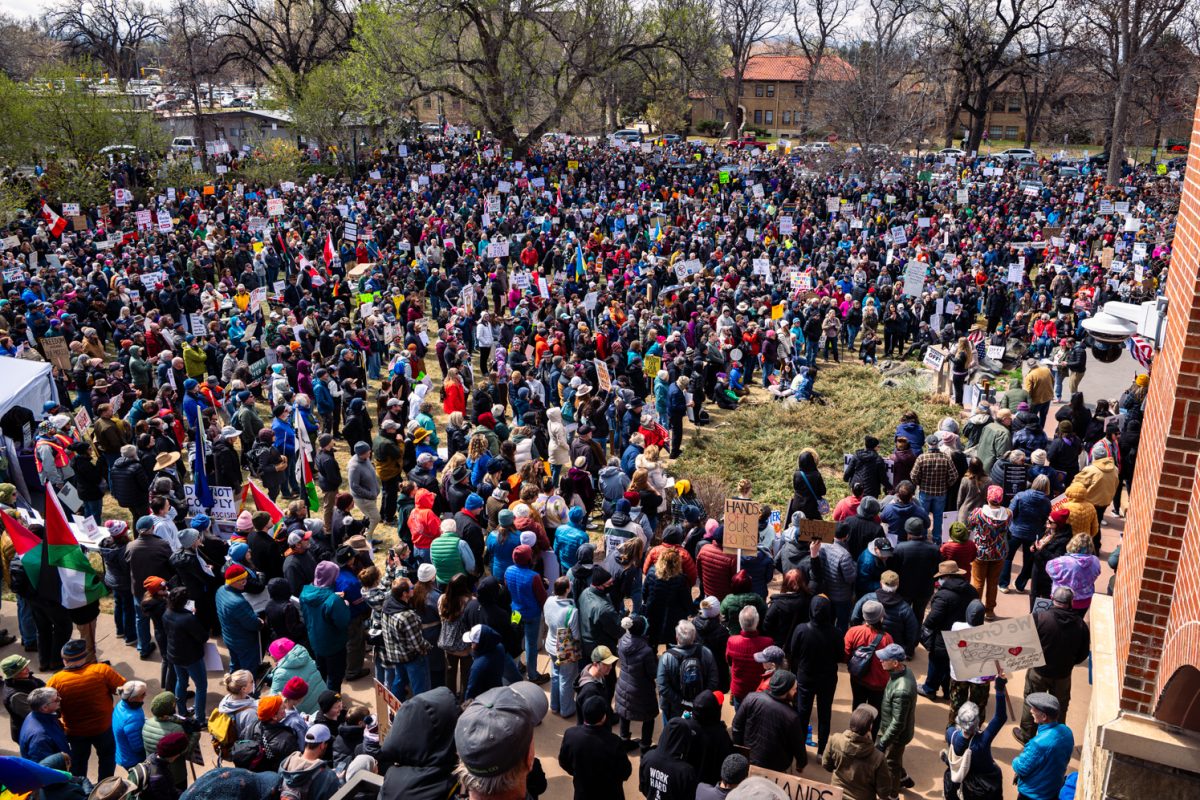Honeybee and pollinator population decline, with increased death and disappearance, around the world have left scientists, beekeepers and farmers stumped, while also threatening the future of the global food supply.

Dr. Dhruba Naug, a professor of Biology, Behavioral and Evolutionary Ecology at Colorado State University said honeybees serve as important pollinators for some top Colorado crops such as sunflower, alfalfa and apples.
“Although not specific to Colorado, and these crops, studies have shown up to a 10 percent drop in production in the absence of pollinators,” Naug said. “It’s not only a decline in quantity, but the quality of self-pollinated fruits are known to be inferior, in terms of (normal size).”
Plants that make up 35 percent of the global crop production with a value of $577 billion a year rely on various pollinators, according to the New York Times. Without pollinators, the agricultural sector would lose millions of jobs worldwide.

Why pollinators are dying
There is no one specific reason as to why honeybees and other pollinators are dying, but rather several possible reasons. Disease, pesticides, habitat loss and climate change are all possible reasons. The rising global temperatures cause problems because bees prefer more cool and mild temperatures.
Naug said his research, along with that of others, has led him to believe habitat loss and poor nutrition are at the center of the decline.
“It has been shown again and again that well-nourished bees are better able to deal with the negative effects of disease, pesticides, etc.,” Naug said. “With Colorado having one of the highest population growth rates in the country, bees will also likely be experiencing some of the highest rates of habitat loss.”
Dave Primer, of the Northern Colorado Beekeepers Association (NCBA), said it is difficult for beekeepers who experience loss in their hives to pinpoint exactly what happened.
Primer has not experienced hive loss in his 32 years of beekeeping. He heard of beginner beekeepers who see their bees slowly disappear just after one year.
“You have to look at a lot of different things, like what type of environment bees are in,” Primer said. “(Bees leaving) is something that has been around a long time and something we don’t know a lot about. It is still a mystery.”
What can be done to help
Although the mystery remains as to why pollinators are disappearing, there are things that can be done to help the bees and other pollinators regain health.
Cameo Holbrook, a beekeeper at Copoco’s Honey of Fort Collins, currently has 40 hives she cares for, while also providing hive inspections for private homes. Holbrook said people should understand that the food supply depends on the health of pollinators.
“Bees are a beneficial part to food and home, they are superorganisms,” Holbrook said. “It is easy for people to incorporate healthy ecosystems for bees by planting trees and flowers, over growing a lawn.”
Primer said it should not be assumed that bees are infallible and for humans to be aware of the weed killers sprayed around nectar or pollinator-friendly plants.
Naug hinted that CSU is formulating a policy that will involve taking a number of steps for making the campus more friendly toward pollinators.
“Conservation of the Earth, in general, will cause a good turn around for all pollinators,” Holbrook said.
Collegian reporter Sarah Ehrlich can be reached at news@collegian.com or on Twitter @SarahEhrlich96.







